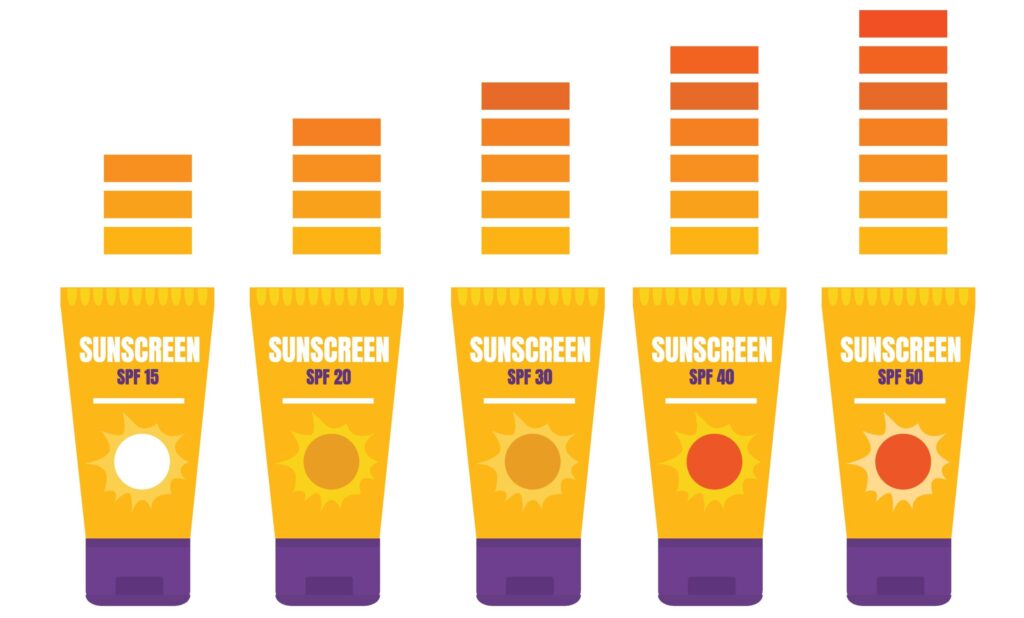Understanding how to read sunscreen labels is crucial for protecting your skin from harmful UV rays and choosing the right product for your needs. Here’s a comprehensive guide to help you decode sunscreen labels and make informed decisions.
1. SPF (Sun Protection Factor)
What It Means:
SPF measures the level of protection a sunscreen offers against UVB rays, which are primarily responsible for sunburn and contribute to skin cancer.
What to Look For:
SPF 30 or Higher: Dermatologists recommend using a sunscreen with at least SPF 30, which blocks about 97% of UVB rays. Higher SPFs offer slightly more protection, but no sunscreen can block 100% of UVB rays.
Example: If your skin normally begins to burn after 10 minutes in the sun, applying an SPF 30 sunscreen would theoretically allow you to stay in the sun for about 300 minutes (30 times longer) without burning.
2. Broad Spectrum Protection
What It Means:
Broad spectrum means the sunscreen protects against both UVA and UVB rays. While UVB rays cause sunburn, UVA rays penetrate deeper into the skin, leading to premature aging and increased skin cancer risk.
What to Look For:
Look for labels stating “broad spectrum” or indicating UVA/UVB protection.
Example: A sunscreen that is labeled as broad spectrum will help prevent sunburn (UVB protection) and also protect against long-term skin damage and aging (UVA protection).
3. Types of UV Filters
Sunscreens use different active ingredients (UV filters) to protect your skin. These can be divided into physical (mineral) and chemical filters.
Physical (Mineral) Sunscreens:
Ingredients: Zinc oxide, titanium dioxide
How They Work: These ingredients sit on top of the skin and reflect UV rays.
Pros: Less likely to cause skin irritation, effective immediately upon application, and often recommended for sensitive skin.
Cons: Can leave a white cast, especially on darker skin tones.
Chemical Sunscreens:
Ingredients: Avobenzone, octinoxate, oxybenzone, homosalate, octisalate, octocrylene
How They Work: These ingredients absorb UV rays and convert them into heat, which is then released from the skin.
Pros: Often more cosmetically elegant, easier to rub in, and less likely to leave a white cast.
Cons: May cause irritation for sensitive skin, require a waiting period after application before exposure to the sun (about 15-20 minutes).
4. Considerations for Sensitive Skin
What to Look For:
Hypoallergenic: Products labeled as hypoallergenic are formulated to minimize the risk of allergic reactions.
Fragrance-Free: Fragrances can irritate sensitive skin, so look for products that are fragrance-free.
Mineral-Based: Physical sunscreens (mineral-based) with zinc oxide and titanium dioxide are generally better for sensitive skin due to their gentle nature.
5. Avoiding a White Cast
What to Look For:
Tinted Formulations: Some mineral sunscreens offer tinted versions that blend better with the skin tone and reduce the appearance of a white cast.
Micronized or Nano Zinc Oxide/Titanium Dioxide: These formulations are designed to be less visible on the skin while still providing effective protection.
6. Water Resistance
What It Means:
Water resistance indicates that the sunscreen retains its effectiveness for a certain period while swimming or sweating.
What to Look For:
Water Resistant (40 Minutes) or (80 Minutes): Indicates how long the sunscreen will remain effective while in water. Reapply immediately after swimming, sweating, or towel drying.
Conclusion
Reading sunscreen labels carefully ensures that you choose the right product to effectively protect your skin. Look for a high SPF value, broad spectrum protection, and consider your skin type and specific needs when selecting between physical and chemical sunscreens. With the right sunscreen, you can enjoy the sun safely while minimizing the risk of skin damage and cancer.
To learn more about the best ways to protect your skin, please contact Dr. Adam Mamelak today.

